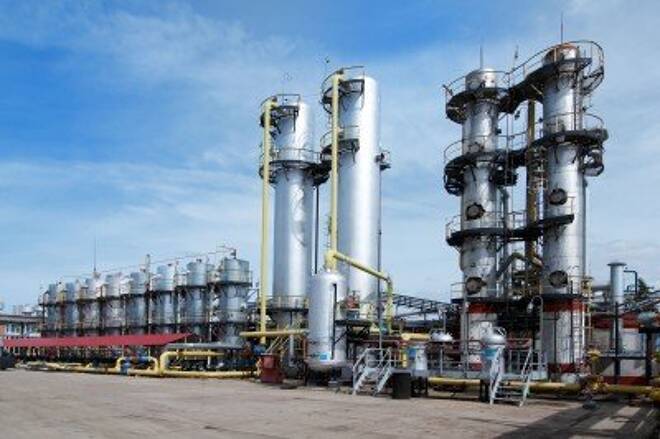Advertisement
Advertisement
Natural Gas Price Fundamental Weekly Forecast – Rangebound Until European and U.S. Weather Models Agree
By:
Natural gas futures spiked to a fresh three-week high on July 20 in reaction to a better-than-expected government storage report, but sellers took over
Natural gas futures spiked to a fresh three-week high on July 20 in reaction to a better-than-expected government storage report, but sellers took over from there, producing a bearish chart pattern on the daily chart that led to further selling on Friday. The move was strong enough to erase the week’s gains, setting up the market for a further decline this week.
September Natural Gas futures settled at $2.961, down $0.010 or -0.34%.
According to the U.S. Energy Information Administration, weekly natural gas in storage rose by 28 billion cubic feet in the week-ended July 14, below the estimate of a 32 bcf build.
That compared with a gain of 57 bcf in the preceding week, an increase of 34 bcf a year earlier and a five-year average rise of 59 bcf.
Total natural gas in storage currently stands at 2.973 trillion cubic feet, according to the EIA, 9.1% lower than levels at this time a year ago but 4.6% above the five-year average for this time of year.
In other news, U.S. natural gas speculators this week boosted their net long positions for a third week in the last four, betting prices will rise on the chance there will be less gas than usual in storage this winter due to relatively low output and rising exports.
Forecast
If you are serious about trading natural gas, you have to be aware that the weekly storage numbers and the Commodity Futures Trading Commission’s position reports are stale data. To be a success, you have to look at future weather forecasts before you can even think about gaining an edge.
We saw this tendency in action last Thursday when the market settled lower on bullish EIA data, and with Friday’s sell-off despite the potentially bullish CFTC report.
Based on the price action, the storage report was already baked into the market, and those longs in the CFTC report were probably the ones selling out of positions on Friday.
The current U.S. and European weather models are calling for warmer-than-normal temperatures the next two weeks, however, the forecasts differ on how hot it would be in early August. This uncertainty is causing the sell-off because investors don’t like uncertainty especially in a highly volatile market like natural gas.
At this time, the European model is projecting U.S. gas consumption would rise from 78.2 bcfd this week to a summertime peak of 79.0 bcfd next week before easing to 78.7 bcfd in two weeks when it sees weather moderating.
The U.S. model, however, is projecting demand would rise from 78.7 bcfd next week to 79.1 bcfd in two weeks as it expects temperatures to continue to edge higher.
U.S. exports are expected to average 8.1 bcfd this week, up 40 percent from a year earlier so I don’t expect a complete washout.
Looking ahead to Thursday’s EIA report, utilities likely added 34 billion cubic feet of gas into storage during the week-ending July 21. This will leave inventories about 4 percent above normal for this time of year.
The current range is $2.830 to $3.101. Its 50% to 61.8% retracement zone is $2.966 to $2.934. This zone was tested on Friday.
Until the U.S. and European weather models agree, we could see rangebound trade on both side of the retracement zone. A sustained move over $2.966 will be bullish. A sustained move under $2.934 will be bearish.
About the Author
James Hyerczykauthor
James is a Florida-based technical analyst, market researcher, educator and trader with 35+ years of experience. He is an expert in the area of patterns, price and time analysis as it applies to futures, Forex, and stocks.
Did you find this article useful?
Latest news and analysis
Advertisement
